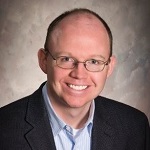 EMAIL
INTERVIEW
– Ken Sinclair and Mike Garceau
EMAIL
INTERVIEW
– Ken Sinclair and Mike Garceau|
September 2019 |
[an error occurred while processing this directive] |
| |
 EMAIL
INTERVIEW
– Ken Sinclair and Mike Garceau
EMAIL
INTERVIEW
– Ken Sinclair and Mike Garceau
| Articles |
| Interviews |
| Releases |
| New Products |
| Reviews |
| [an error occurred while processing this directive] |
| Editorial |
| Events |
| Sponsors |
| Site Search |
| Newsletters |
| [an error occurred while processing this directive] |
| Archives |
| Past Issues |
| Home |
| Editors |
| eDucation |
| [an error occurred while processing this directive] |
| Training |
| Links |
| Software |
| Subscribe |
| [an error occurred while processing this directive] |
Sinclair: How is the role of the facility manager changing?
Historically, facility managers spent the majority of their time
responding to equipment malfunctions, system-related issues and
occupant comfort complaints. New technology has taken a lot of this
reactive work off of their shoulders by providing increased data
connectivity, analysis and enhanced automation. This frees up more
time, allowing for more proactive work.
As Operations Technology (OT) becomes more common in building
operations, the responsibilities of facility management and IT are
blurring. There has traditionally been a very clear distinction and
separation of duties between facility management and IT, but with the
introduction of IP controllers, that’s changing. Some aspects of IT are
falling on facility management staff and vice versa. Now facility
management gets better monitoring and optimization of uptimes which are
standard in IT networks, and IT has access to additional building data
that they can utilize to improve enterprise networks.
Sinclair: What is driving this change?
The innovation of new building management tools – such as Honeywell’s
CIPer™ Model 30 – are designed to address challenges faced by facility
managers and, subsequently, are changing the nature of their role.
CIPer 30 is more than just a building controller – it’s a network
appliance. It has the capability of connecting disparate peripheral
device information and moving the data in a rapid and secure manner to
precisely where it needs to be. Most of the controllers in building
systems today communicate at 19 kbaud per second, but our new CIPer Model 30 Controller is 1000 times faster.
The safety, precision and speed of data transmission allow facility
managers to go far beyond what they can do with legacy products and the
bulk of disparate systems in buildings today. Real-time analytics and
improved connectivity enable facility managers to deliver more value to
the building owner and occupants by bringing more assets – like
surveillance video and real-time energy consumption and equipment
health – into the controller system. This is expanding and changing the
abilities and expectations of the facility manager role.
Sinclair: How are facility managers responding to the new technology and changing nature of the job?
Overall, facility managers feel empowered by new technology, like CIPer
30. It gives them more time to focus on preventing and preparing for
issues, instead of responding to them.
Still, new technology can be intimidating at first. As they see how it
improves their day-to-day job and provides sustained cost savings
results, they are convinced. For example, once a facility manager sees
that maintenance and repair can be completed in one visit – because the
engineer knew what the problem was and what tools or parts to bring
before arriving on-site – they recognize how much time was saved.
As the next generation workforce continues to enter the field, they’ll
also bring a new way of working with this kind of technology and
connectivity. For them, it is instinctive.
[an error occurred while processing this directive]
Sinclair: How is security addressed?
The data collected by CIPer 30 is stored locally on the device itself.
To access the data and controls, one must be on-premise and have an
approved user ID and protected password. Each user has administrative
rights or view-only rights based on Role-Based Access Control settings.
The data that is moving from controller to controller to supervisor
within a system is fully encrypted. Even if a hacker or disgruntled
employee attempted to gain access to the controller or data, they could
not decipher it without a key.
Sinclair: How does this technology impact the end-user, building occupants?
With advanced iterative technology like CIPer Model 30, overall
occupant comfort will improve. They will have more transparency and
control, with the ability to operate wall displays that can change
temperature, lighting, etc., giving them greater control over their
work environment.
The system notifies facility management when a building product is not
operating properly or efficiently or is predicted to fail prematurely.
For example, the system will alert facility management that an air or
water filter needs to be replaced in advance of becoming clogged. This
allows facility management to order a new filter before disruption to
occupants occurs, and energy efficiency drops resulting, in additional
operating costs.
Sinclair: What does the future of facility management look like?
Going forward, the building controller will become more important, and
building operations will become smarter. More artificial intelligence
and machine learning capabilities will be incorporated into building
products, like sensors and peripheral devices. More in-depth data will
be captured, and this data will be transmitted and acted upon more
quickly. Auto-tuning and self-healing network capabilities will
improve, and buildings will operate closer to maximum efficiency to
reduce operational cost.
As more tedious tasks are managed automatically, the role of the
facility manager will continue to evolve. They will serve as advisors
that interpret building data analytics and provide recommendations on
how to further increase efficiencies, cut costs, and develop a more
comfortable, safe experience for occupants.
[an error occurred while processing this directive]
[Click Banner To Learn More]
[Home Page] [The Automator] [About] [Subscribe ] [Contact Us]